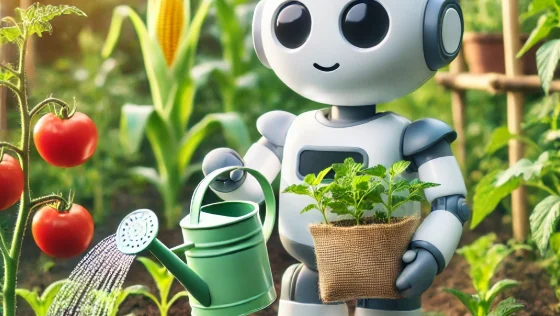In recent discussions about sustainability, self-sufficiency, and reducing carbon footprints, the idea of prioritizing local goods has become ubiquitous. Many argue that in the recent past, certain countries were highly self-sufficient in food production, but now, that level of independence has declined. While this sounds like a valid argument, it’s essential to look deeper into the problem.
Even in the not too distant past, people had access to far fewer products compared to today. Over time, consumers have become accustomed to a much wider variety of goods, from exotic fruits to specialty products that were once rare. This has spoiled the consumers, making it hard to revert to more limited and simpler options. The current trend of promoting local food is partly driven by the desire to reduce the carbon footprint associated with transportation, as importing goods from distant places adds to emissions.
However, what many people overlook is that growing certain crops locally can still contribute significantly to the carbon footprint. Transforming natural habitats to accommodate crops that are not suited to the local environment can cause more harm than transporting goods from regions where they grow naturally. While the intention to support local food production is commendable, it’s important to carefully consider the environmental impact of forcing crops to grow in regions with unsuitable climate.
Since most people enjoy bananas, let's consider an absolutely absurd example: growing bananas in central Europe versus growing them in their natural tropical habitat. Bananas like to grow in a warm, humid environment with minimal temperature fluctuations throughout the year. Now, let’s estimate the carbon footprint of successfully growing a single banana plant in central Europe.
Disclaimer: all calculations are made by a non-expert, based on open-access information, and are very approximate.
1. Climate Control
To maintain a temperature of 25-30°C, especially during cold winters, greenhouses or indoor growing spaces need to be heated. This can be done with electric or gas heaters. Estimated carbon footprint for electric heating is approximately 0.2-0.5 kg carbon dioxide equivalent (CO₂e) per kWh of electricity. A typical greenhouse heating system may use 1000-1500 kWh per month, resulting in 200-750 kg CO₂e per month. For natural gas, emissions are about 0.184 kg CO₂e per kWh. A similar heating requirement would result in 184-276 kg CO₂e per month for gas heating.
2. Lighting
During winter months or in indoor settings, additional lighting is necessary, especially LED grow lights consume about 50-200 watts per hour depending on the setup. If used for 12 hours daily, that amounts to 0.6-2.4 kWh per day. For one month, this results in approximately 18-72 kWh per month, leading to an estimated 3.6-36 kg carbon dioxide equivalent per month full-spectrum grow lights, to provide the necessary 12-14 hours of light per day.
3. Humidity Control
Depending on the system, a humidifier may consume 30-50 watts. If running 12 hours a day, this results in 0.36-0.6 kWh per day. Over a month, this translates to 10-18 kWh, resulting in 2-3.6 kg CO₂e per month for humidification.
4. Ventilation and Airflow
Controlled ventilation is required to prevent excess moisture, fungal growth, and to ensure air circulation needed to grow our banana. This can be achieved using electric fans or a ventilation system. Fans typically use 50-150 watts. If running for 12 hours a day, this would consume 0.6-1.8 kWh per day or 18-54 kWh per month, resulting in 3.6-10.8 kg CO₂e per month.
5. Watering
While in tropical areas, rainfall provides most of the water needed for banana plants, supplemented by natural ground or river water, our banana plant in central Europe would require regular watering, especially in controlled indoor environments where rainfall is absent. This can lead to higher water usage and potentially the use of energy-intensive irrigation systems. Minimal direct emissions, but if using an automated irrigation system powered by electricity, it might consume around 0.5-1 kWh per day, resulting in 1.5-3 kg CO₂e per month.
6. Fertilization
In tropical regions, banana plants benefit from naturally rich, fertile soil and organic material, however, our banana plant would need regular fertilization due to the absence of naturally fertile soil in central Europe, and we know that synthetic fertilizers often have a high carbon footprint due to their production process. The carbon footprint of synthetic fertilizers is estimated at 1-4 kg CO₂e per kg of fertilizer. Depending on the fertilization schedule, a banana plant may require 1-5 kg of fertilizer per growing cycle, leading to an estimated 1-20 kg CO₂e.
7. Soil and Containers
To grow a banana plant in the above mentioned conditions we would have to grow it in a container or raised bed with a mix of soil, compost, and organic matter, which needs to be regularly refreshed or replaced. On the contrary, in their natural habitat, bananas are grown directly in tropical soil, which is rich in nutrients and naturally supports growth. Peat-based or commercial potting soil has an estimated carbon footprint of 0.5-3 kg CO₂e per bag (50 liters). Depending on the size of the pot and plant, the estimated value would be 1-9 kg CO₂e for initial soil setup.
8. Transportation of Materials
Many materials such as soil, fertilizers, grow lights, and greenhouse equipment need to be transported, often over long distances, adding to the carbon footprint. The emissions from transporting gardening supplies (soil, fertilizer, containers) depend on the distance and the mode of transport. For trucking, the emissions are around 0.1-0.2 kg CO₂e per ton-km. If transporting 50 kg of materials over 100 km, this would result in 1-2 kg CO₂e.
9. Pest Control
Indoor environments may require pest control using insecticides or fungicides, which have associated environmental impacts, while tropical areas have natural predators that help manage pests, reducing the need for chemical treatments. The carbon footprint of chemical pesticides varies, but it's generally 5-10 kg CO₂e per kg of active ingredient. Small-scale banana growing may require 0.1-0.5 kg of pesticide per cycle, leading to an estimated 0.5-5 kg CO₂e.
Indoor environments may require pest control using insecticides or fungicides, which have associated environmental impacts, while tropical areas have natural predators that help manage pests, reducing the need for chemical treatments. The carbon footprint of chemical pesticides varies, but it's generally 5-10 kg CO₂e per kg of active ingredient. Small-scale banana growing may require 0.1-0.5 kg of pesticide per cycle, leading to an estimated 0.5-5 kg CO₂e.
All the above add up to the carbon footprint of a single banana plant grown in central Europe. Overall, one can estimate CO₂e from 2340 kg up to a whopping 14497 kg CO₂e during the banana fruiting period, which is estimated as 12-18 months. On the other hand, in their natural habitat, bananas have a very low carbon footprint, and when properly planted can be even carbon neutral. The only unavoidable impact is transportation, so let’s estimate how deleterious it would be for the environment bringing bananas to central Europe. Based on various sources, available online, one can find that a single banana plant can produce up to 50 kilos (if we are lucky) of bananas.
To estimate transport from the closest tropical region in central Europe, which is the Canary Islands, to Prague, a city in central Europe, we should choose the method of transportation. One possible way to deliver something from the Canary Islands to Prague is by plane. This would probably scares the hell out of the environmental activists, however if we estimate the carbon footprint of 50kg of bananas traveled by a cargo plane for 3575 km, we get only 90 kg CO₂e, which is roughly 26 times less than the most optimistic scenario of planting a banana tree in Prague.
However, it is more common to ship bananas by cargo ship in refrigerated containers, which has a carbon footprint of approximately 0.123 kg CO₂e per transferring a metric ton of bananas for one kilometer. In this case, the estimated emissions would be as low as 22 kg CO₂e, making up to 600 times more environmentally friendly than a realistic estimation of growing bananas in a temperate European climate.
So, what’s the real takeaway from our absurd banana-growing example? The clear lesson is that if we force Mother Nature to do something against her will, we will pay a high price for it. Therefore growing bananas in Central Europe could be incredibly damaging to the environment. The carbon footprint associated with creating the ideal conditions for bananas in a temperate climate is hundreds of times higher than simply importing them from regions where they naturally habitat. Local is not always better, and we need to carefully weigh the environmental costs of growing crops in non-native environments.
While it’s not feasible to manually calculate the carbon footprint for every plant or crop, a solution to this problem, and it lies in the use of machine predictive modeling for agriculture. Machine learning offers an opportunity to model and predict these outcomes efficiently. Through predictive modeling, farmers can assess the complex interrelationships between various agricultural factors like crop type, local climate, weather patterns, and resource usage. This approach allows for smarter decision-making that minimizes environmental harm while maximizing agricultural efficiency.
By implementing machine learning models, farmers can adopt precision farming techniques that go beyond traditional methods. These models can provide insights on the most optimal times to water crops, apply fertilizers, and harvest, based on real-time data. These models can guide the farmers make more sustainable choices, thus mitigating the environmental impact. This is precisely the expertise we bring at the Data Science Laboratory (DataLlab) at Faculty of Information Technology Czech Technical University in Prague, where among the other topics we specialize in harnessing machine learning to empower farmers with precision farming solutions that drive sustainability and innovation.



Existing Comments